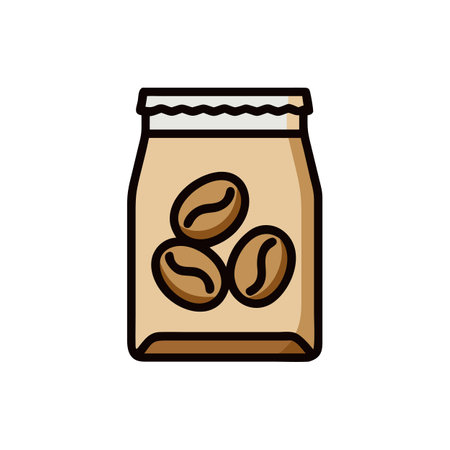Introduction: The Rise of Organic and Natural Pet Food
In recent years, more American pet owners are turning to organic and natural pet food as they strive to give their furry family members the best possible care. This shift mirrors a broader trend in human nutrition, where people increasingly seek out cleaner, healthier ingredients for themselves—and now, for their pets too. Shelves in local grocery stores and specialty pet shops are filling up with products labeled “organic,” “all-natural,” or “non-GMO,” and these options are gaining traction among dog and cat parents who want peace of mind about what goes into their pets bowls. But what’s fueling this movement? Many pet lovers are becoming more aware of the potential impact that diet has on the long-term health and well-being of their animals. As a result, they’re willing to explore new options—even if it means paying a higher price—to ensure their pets receive high-quality nutrition free from artificial additives, preservatives, and questionable fillers. In this article, we’ll dig deeper into the reasons behind this growing trend, and help you decide whether organic and natural pet food is truly worth the investment for your beloved companion.
2. What Does Organic and Natural Really Mean?
When it comes to pet food, terms like “organic” and “natural” can be confusing for many American pet owners. Its important to understand what these labels actually mean in the context of the U.S. market, especially when considering whether to pay a premium for such products. Below, we clarify these definitions based on current regulations and common labeling practices.
Defining Organic Pet Food
The term “organic” is strictly regulated by the United States Department of Agriculture (USDA). For a pet food to be labeled as organic, it must meet specific criteria set by the National Organic Program (NOP). These standards ensure that the ingredients are grown without synthetic pesticides, fertilizers, or genetically modified organisms (GMOs), and that animals used for meat are raised according to organic farming methods.
USDA Organic Certification Levels
| Label | Meaning |
|---|---|
| 100% Organic | All ingredients (excluding water and salt) are certified organic. |
| Organic | At least 95% of ingredients are certified organic; remaining ingredients must be approved by USDA. |
| Made with Organic Ingredients | Contains at least 70% organic ingredients; cannot display the USDA Organic seal. |
Understanding Natural in Pet Food
The term “natural,” while popular on packaging, is less rigorously defined than “organic.” According to the Association of American Feed Control Officials (AAFCO), “natural” pet foods must be made without artificial flavors, colors, or preservatives. However, natural does not mean organic—ingredients may still be grown conventionally, and there are fewer restrictions regarding their sourcing.
Natural vs. Organic: Key Differences
| Aspect | Natural | Organic |
|---|---|---|
| Sourcing Requirements | No artificial additives; conventional farming allowed | No synthetic chemicals or GMOs; strict farming standards |
| Certification Needed | No federal certification required; AAFCO guidelines only | USDA certification mandatory for labeling as “organic” |
Common Labeling Practices in the US Market
In American pet stores, youll often see products labeled as “natural,” “made with organic ingredients,” or bearing the official USDA Organic seal. It’s crucial to read the label carefully: only foods carrying the USDA Organic seal have been thoroughly vetted against national standards. Products with looser terms like “natural” may offer some benefits but don’t guarantee the same level of oversight or ingredient purity.
![]()
3. Potential Health Benefits for Pets
Many American pet owners are drawn to organic and natural pet foods in hopes of giving their furry friends a health boost. Proponents often highlight several possible advantages, including improved digestion, shinier coats, and fewer allergic reactions. But how strong is the science behind these claims?
One of the most commonly cited benefits is better digestive health. Organic and natural pet foods typically avoid artificial preservatives, colors, and fillers that can sometimes upset sensitive stomachs. Some studies suggest that pets on diets with fewer synthetic additives may experience less gastrointestinal distress, such as vomiting or diarrhea. However, it’s important to note that large-scale, long-term research in this area is still limited.
Another frequently mentioned advantage is a healthier coat. Diets rich in natural proteins, healthy fats, and essential fatty acids—often found in higher concentrations in premium organic products—may contribute to a shinier coat and healthier skin. Pet owners often report improvements after switching to more natural formulas, but scientific evidence supporting these observations remains mostly anecdotal.
Allergies are another concern for many pet parents. Some pets develop sensitivities to artificial ingredients or certain common fillers like corn, wheat, or soy. Organic and natural pet foods tend to eliminate many of these potential allergens. While some pets do seem to benefit from these ingredient changes, allergies are highly individual and not all cases improve simply by going organic or natural.
It’s also worth mentioning that while organic certification ensures the use of certain farming practices and ingredient sourcing standards, “natural” is a less regulated term in the U.S., which means products labeled as such can vary widely in quality and composition. For optimal results, always review ingredient lists and consult your veterinarian before making significant dietary changes for your pet.
In summary, while there are promising reasons to consider organic or natural pet food—including potential improvements in digestion, skin health, and allergen reduction—current scientific evidence is still evolving. Observed benefits may depend on your individual pet’s needs and sensitivities rather than the label alone.
4. Understanding the Cost: Why Is It More Expensive?
When it comes to organic and natural pet food, one of the first things many pet owners notice is the higher price tag compared to conventional brands. But what exactly drives these costs up? Let’s break down the key factors contributing to the premium pricing within the U.S. pet food industry.
Sourcing High-Quality Ingredients
Organic and natural pet foods require ingredients that meet strict sourcing standards. This often means partnering with farms that avoid synthetic pesticides, growth hormones, and genetically modified organisms (GMOs). Sourcing such ingredients in the U.S. involves higher farming costs and limited supply, which translate into increased production expenses for manufacturers.
Production Methods and Certification
The process of producing organic and natural pet food is more labor-intensive and regulated than traditional methods. Facilities must adhere to rigorous cleaning protocols and keep organic ingredients separate from non-organic ones, ensuring no cross-contamination occurs. Additionally, obtaining USDA Organic or similar certifications involves regular inspections and compliance fees, all of which add up.
Stricter Quality Control Standards
Manufacturers of organic and natural pet foods are held to higher quality control standards. This means more frequent testing for contaminants, nutritional accuracy, and ingredient integrity. These additional steps help ensure safety and transparency but also increase operational costs.
Cost Comparison Table
| Factor | Conventional Pet Food | Organic/Natural Pet Food |
|---|---|---|
| Sourcing | Standard suppliers; less regulation | Certified organic farms; stricter sourcing |
| Production Process | Basic protocols; mass production | Segregated facilities; specialized equipment |
| Quality Control | Minimal testing requirements | Frequent testing; higher compliance standards |
| Certification Costs | N/A or minimal | USDA/third-party certification fees |
| Ingredient Cost | Lower-cost fillers common | No artificial additives or cheap fillers allowed |
The Bottom Line on Price
The premium price you see on organic and natural pet food reflects more than just a marketing label—it represents a commitment to better ingredients, safer production practices, and stricter regulatory oversight. While this means a higher cost at checkout, it may also contribute to long-term health benefits for your pets.
5. How to Decide: Is It Worth It for Your Pet?
Choosing whether to invest in organic and natural pet food is a personal decision that depends on several important factors unique to each American pet family. Start by considering your pet’s specific health needs. Does your dog or cat have allergies, digestive sensitivities, or a chronic medical condition? If so, some pets may benefit from the higher quality ingredients and absence of artificial additives found in organic and natural formulas. Next, evaluate your lifestyle and values. For some owners, supporting sustainable agriculture or reducing their pet’s exposure to pesticides aligns with their beliefs about healthy living. Others may prioritize convenience or affordability over specialty diets.
Budget is also a key factor—organic and natural options can cost significantly more than conventional brands. Review your monthly pet care expenses to see if you can comfortably accommodate the price difference without sacrificing other important aspects of your pet’s well-being, like regular veterinary care or enrichment toys. Remember, not all pets require premium diets to thrive; many do well on high-quality conventional foods. If you’re unsure, consult your veterinarian for guidance tailored to your pet’s breed, age, activity level, and health history.
Ultimately, the best choice is the one that keeps both you and your pet happy, healthy, and stress-free. Balancing nutrition, budget, and your own values will help ensure you’re making the most informed decision for your furry family member.
6. Tips for Choosing Quality Pet Food on a Budget
Shopping for pet food in the U.S. can feel overwhelming, especially when balancing your pet’s health and your household budget. Whether you’re considering organic options or simply want to ensure safe, nutritious meals for your furry friend, there are practical ways to make smart choices without overspending.
Understand Pet Food Labels
Learn how to read ingredient lists and nutritional statements. Look for foods labeled “complete and balanced” according to AAFCO (Association of American Feed Control Officials) guidelines, which means they meet basic nutritional standards—even if they aren’t organic. Don’t be swayed by fancy packaging alone; focus on what’s inside.
Prioritize Key Ingredients
When comparing products, prioritize whole protein sources like chicken, beef, or fish as the first ingredient. Avoid foods with excessive fillers such as corn, soy, or meat by-products. Organic or not, quality ingredients make a difference in your pet’s overall health.
Shop Smart and Compare Prices
Take advantage of sales at big-box retailers like PetSmart, Petco, or even warehouse clubs like Costco and Sam’s Club, which often offer bulk discounts. Use price comparison apps or websites to find deals on reputable brands. Signing up for loyalty programs or email alerts can also help you save on your preferred products.
Consider Store Brands and Local Options
Some grocery store or regional chains carry private-label pet foods that meet high safety standards but cost less than national brands. Local pet shops may also stock affordable natural and organic lines sourced from nearby farms—supporting local business while feeding your pet well.
Buy in Bulk and Store Properly
Larger bags typically offer better value per pound. If storage space allows, buy in bulk and use airtight containers to keep food fresh and safe from pests. Just be sure to check expiration dates before purchasing large quantities.
Talk to Your Veterinarian
Your vet is a valuable resource for personalized advice. Ask about essential nutrients for your pet’s breed, age, and health needs—and whether going organic makes sense for your situation. They may suggest reputable brands that fit both your budget and your pet’s unique requirements.
Ultimately, feeding your pet high-quality food doesn’t have to break the bank. By staying informed, shopping strategically, and focusing on nutrition over branding hype, you can provide wholesome meals—organic or not—that support a long, healthy life for your beloved companion.


